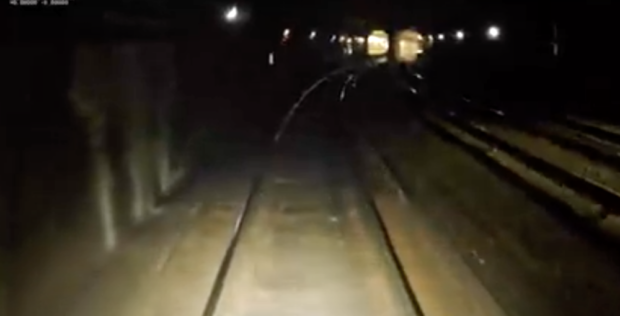Following the partial collapse of a Boston-area parking garage onto subway tunnels, Massachusetts Bay Transportation Authority officials used a drone to conduct preliminary inspections on two subway lines before sending in a team of structural engineers.
The construction accident prompted delays and closures to subway services in downtown Boston, and the drone helped official assess the conditions of the tunnels, MBTA General Manager Steve Poftak told WCVB5 news.
MBTA enlisted the drone from the Massachusetts’ Department of Transportation’s Aeronautics Division Drone Program, which regularly provides unmanned aerial system services to all divisions of MassDOT and the MBTA for inspecting critical infrastructure like roads, bridges, airports and rail and transit facilities.
The silent 29-second video posted to the MBTA’s Twitter account shows Orange Line subway tracks in the foreground and two platforms in the distance, as the drone moves slowly through the darkened tunnel.
https://youtu.be/4bmVSO7PtSc
Only a small area in front of the camera is lit as the drone follows the tracks, pauses briefly to scan to the right, and then continues on toward the platforms. No damage is visible in the brief video.
States have been using drones for safety inspections for several years. In 2015, Connecticut’s DOT tested drones to inspect and take photos of hard-to-reach areas under the Gold Star Memorial bridge in New London. DOT officials in Minnesota, Delaware and Ohio conducted similar experiments.
In 2020, the North Carolina DOT became the first state transportation agency to be granted a waiver from the Federal Aviation to fly drones beyond the pilot’s line of sight, enabling inspectors to collect high-resolution images in hard-to-see areas.
In 2021, the New York City Department of Buildings detailed the advantages UAS offer for collecting visual data during routine building safety inspections. Apart from certain physical examinations that must be conducted by qualified professionals, the department concluded drones can gather a significant amount of detailed visual information and help inspectors conduct visual reviews of building façade with greater efficiency.
Source: GCN

